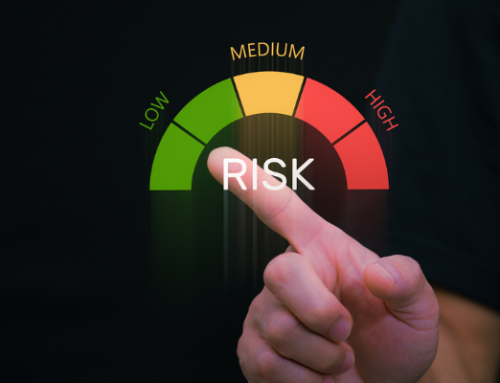Source: RSM US LLP.
ARTICLE | November 21, 2023
Skyscrapers are designed to sway. If they were too rigid, high winds or earthquakes would crack their structures. They are built to be resilient under all kinds of unforeseen conditions.
Similarly, an organization cannot afford to be rigid and inflexible. Successful companies are resilient.
Operational resiliency is a company’s ability to anticipate, prepare for, respond to and recover from unanticipated disruptions while continuing to deliver its core products and services. Creating resiliency is a proactive endeavor that focuses on building an organization’s capacity to absorb shocks and adapt swiftly to evolving circumstances.
Companies with a high degree of resiliency can withstand unexpected challenges or even full-blown crises. The key is to create a business model that is powerful and efficient, yet adaptable enough to address the sudden problems—anything from cyberattacks to natural disasters to supply chain disruptions—that can plague a business.
But how does a company accomplish that?
Assess the situation
Many third-party organizations provide business motion analyses, which gather information about a company’s level of resiliency. This type of analysis examines relevant criteria across an organization, such as the company’s industry, strategy, governance, communication approach, decision-making structure and other factors, coupled with a deep systematic study, now AI-driven, of the movement and flow of tasks, activities and information within the organization. The outcome identifies inefficiencies, bottlenecks and areas for improvement to optimize the overall performance and effectiveness of the business operations. A thorough analysis will also provide an objective look at how prepared a company is for an emergency.
This analysis does not necessarily identify specific threats. Instead, motion analysis assesses if the company is ready for the day when something goes wrong.
The dangers of being unprepared
Companies that lack resilience put themselves at risk for a host of problems, including the following:
- Financial losses—negatively affecting cash flow
- Massive downtime—alienating customers
- Reputational damage—causing time-consuming crisis management
- Regulatory noncompliance—leading to fines and consent orders
- Shaken confidence of stakeholders—devaluing the brand and company
In some cases, a lack of resiliency could even mean the end of the company altogether. It’s crucial, therefore, to understand the components of operational resiliency and how to enhance them.
Risk management
There are several pillars that support the concept of operational resiliency. Perhaps the most foundational of these is risk management.
A comprehensive understanding of potential risks consists of identifying a company’s vulnerabilities in processes, systems, suppliers, partners and external factors, then assessing their potential impact. By obtaining a clear view of these risks, organizations can create targeted strategies to mitigate them.
A well-structured risk assessment can incorporate everything from testing a company’s cybersecurity to analyzing geopolitical issues that could disrupt the organization’s functions, among other factors. Potential risks can be obvious or hidden, major or minor, direct or indirect. In all cases, the resilient company has completed scenario planning that at least considers the possibility of these risks becoming a reality.
Business continuity
Companies must maintain their essential functions even during a crisis. This involves formulating contingency plans, establishing alternative work sites, designing flexible processes and implementing communication protocols to ensure seamless collaboration among employees and stakeholders.
For example, natural disasters cannot be contained. However, resilient organizations find a way to keep working even when Mother Nature wants to shut the company down.
It’s not just about assessing worst-case situations. It is about running through scenarios, coming up with solutions and being prepared to implement them when disaster strikes.
Data management
Technology plays a crucial role in operational resiliency. However, many organizations suffer from siloed data that is stored across different systems, and in such cases, vital information goes unused or unexamined. Embracing digital transformation enables organizations to quickly adapt to changing conditions and to make decisions in real time.
Redundancy in critical systems, regular data backups and strong cybersecurity measures are vital to prevent, or recover from, cyberattacks or technical failures. In addition, new tools are being developed constantly, and companies need to keep up to date on the best systems to bolster their resiliency.
Perhaps more importantly, access to real-time insights—gathered from the volumes of data collected and stored—enables management teams to make critical decisions quickly when faced with the unexpected.
Proactive leadership and culture
Resilient organizations are led by individuals who make thoughtful and data-driven decisions under pressure and guide their teams through challenging times. Adaptive leaders foster a culture of trust, preparedness, open communication and timely decision-making, which are essential in times of crisis.
As with every aspect of leadership, the tone that is set becomes contagious. Flexible leaders inspire flexibility in others within the organization. Leaders who panic provoke more panic. Resiliency is a trait that filters down through a company.
The resilient organization
Operational resiliency is not a luxury. It is a necessity for companies that want to stay relevant in today’s dynamic business environment.
By identifying risks, building sound strategies and fostering a culture of adaptability, organizations can navigate crises with strength and agility. Operational resiliency equips businesses to overcome challenges and emerge even stronger than before.
Source: RSM US LLP.
Reprinted with permission from RSM US LLP.
© 2024 RSM US LLP. All rights reserved. https://rsmus.com/insights/services/business-strategy-operations/what-is-operational-resiliency-and-why-is-it-important.html
RSM US LLP is a limited liability partnership and the U.S. member firm of RSM International, a global network of independent assurance, tax and consulting firms. The member firms of RSM International collaborate to provide services to global clients, but are separate and distinct legal entities that cannot obligate each other. Each member firm is responsible only for its own acts and omissions, and not those of any other party. Visit rsmus.com/about for more information regarding RSM US LLP and RSM International.




